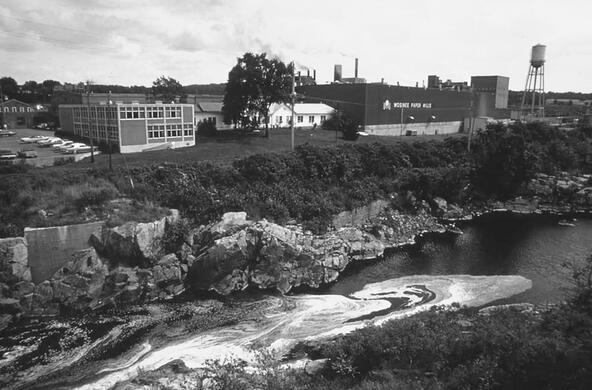This month Dutchess County released its 2010 Natural Resource Inventory. The effort, which updates a 1985 inventory, provides a comprehensive snapshot of the county's natural resources, including their current state, how they are regulated or classified, and trends and changes seen over time.
The inventory is an essential tool in guiding land use planning and innovating resource protection. Five organizations led the two-year project: Cornell Cooperative Extension Dutchess County, Cary Institute of Ecosystem Studies, Dutchess County Environmental Management Council, Dutchess County Department of Planning and Development, and Vassar College Environmental Research Institute. Twenty-three local experts and scientists also contributed.
The inventory's findings were debuted at a conference held at Vassar College on Nov. 6. Among the topics discussed were how land and water resources have changed significantly over the past 25 years and the need for decision-making to be based on current data. Future generations depend on effective environmental laws and stewardship practices. As such, natural resource inventory partners are making a special effort to connect the inventory with town officials, conservation advisory councils, planning boards and the public.
While many of the topics covered in the 1985 inventory are still pertinent, new threats and issues have emerged, most importantly the issue of climate change. The 2010 inventory is also superior in geographic coverage, data categories and precision thanks to technological advances.
The 2010 inventory is broken into nine chapters that include air quality, water resources, climate change, and biodiversity. Each chapter describes a given resource and provides insight into how much of the resource exists within the county, what sort of stress it is under and how this knowledge might inform local decision-making.
The new inventory has some good news, showing that past decisions to protect resources have had the desired effect. For instance, the acidity of rain has declined significantly since the 1985 inventory, although the precipitation that currently falls on the county is still more acidic than before the Industrial Revolution.
On a more disturbing note, approximately 25 percent of the private drinking water wells sampled by the Dutchess County Department of Health show chloride levels above 100 mg/L, a concentration that would limit their use by people on a severe salt intake restriction. Dutchess County continues to have abundant and high quality water resources, but must pay attention and track streams and aquifers to ensure this remains the case.
Finally, Dutchess County is already experiencing climate change. During the period from 1950-2007, there has been an overall increase in temperature in the county by about 1.1 degrees Fahrenheit, and an increase in the frequency and intensity of extreme precipitation events.
The 2010 Natural Resource Inventory is an important new tool for individuals and organizations that are tasked with land use decision-making. The information and maps in the Natural Resource Inventory can be used to identify critical areas for protection, such as wetlands, floodplains, or prime aquifer recharge areas. They can also help identify threats to natural resources and plan for conservation and mitigation.
The inventory is not designed for site planning, but can serve as a trigger for more in-depth analysis. Local resource regulation was highlighted at the conference as a way for residents to ensure a high quality of life in the future. Along with this benefit comes the responsibility of towns and other municipalities to provide oversight of the water, air and land under their control.
We rely on natural resources for the air we breathe, water we drink and to grow the food we eat. Their maintenance depends on a good understanding of their status and an informed, engaged public.






